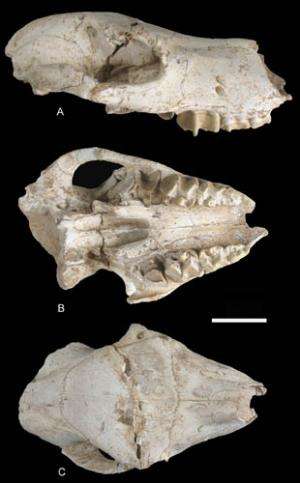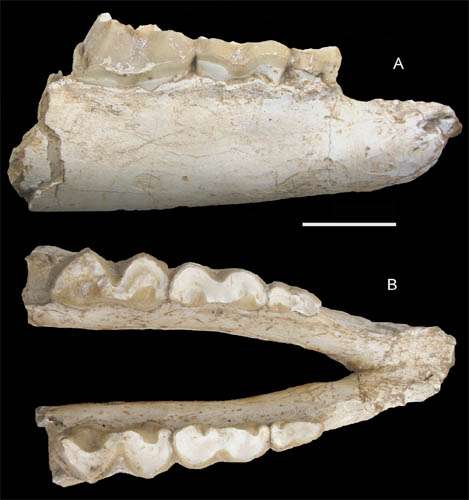Juvenile Chalicothere found from the Pliocene of Linxia Basin, Northwestern China

Fossils of Chalicotheres are generally rare, and only a few poorly preserved specimens have previously been discovered in China. Dr. DENG Tao, Institute of Vertebrate Paleontology and Paleoanthropology (IVPP), Chinese Academy of Sciences, and his team reported a juvenile skull of a chalicothere with its articulated mandible from the Pliocene Duikang locality of Linxia Basin, Guanghe County, Gansu Province, China. This study published online in the journal of Geobios 45 (2012), helps better understand the knowledge of the osteology and taxonomy of this animal, and the Pliocene paleoenvironment in the Linxia Basin.
Chalicotheres are a group of extinct and unusual perissodactyls with clawed terminal phalanges. They have low-crowned and quadrate upper molars, and have been found from Asia (Late Oligocene to Early Pleistocene), Europe (Middle to Late Miocene), and Africa (Early Miocene).
This specimen has high crown and large size of upper molars, obvious crochets on upper milk teeth and metastylids on the lower milk teeth. It can be identified as Ancylotherium sp. based on the short symphysis of the mandible and the large size and occlusal structure of the check teeth, which are different from any other known species of this genus.
The Duikang locality is located 6.5 km southwest of Guanghe County, Gansu Province. The fossiliferous lens containing Ancylotherium was excavated from the bottom of the Hewangjia Formation, about 0.8 m above the Mio-Pliocene boundary.

Comparison studies shows that four other species of Ancylotherium are likely from the Gansu, Sichuan, Shanxi and Shaanxi Provinces in China. Huanghotherium and Gansuodon are synonymous with Ancylotherium.
"Considering the associated fossil animals in the Duikang locality, Hipparion, Sinotragus and Gazella indicate an opened grassland environment, while two species of Giraffidae, Palaeotragus and Samotherium, as well as Ancylotherium, are browsers", said first author CHEN Shaokun, a Ph. D. student of the IVPP, "We inferred a subarid steppe environment with mixed small patches of forest in the Linxia Basin during the Early Pliocene."




















